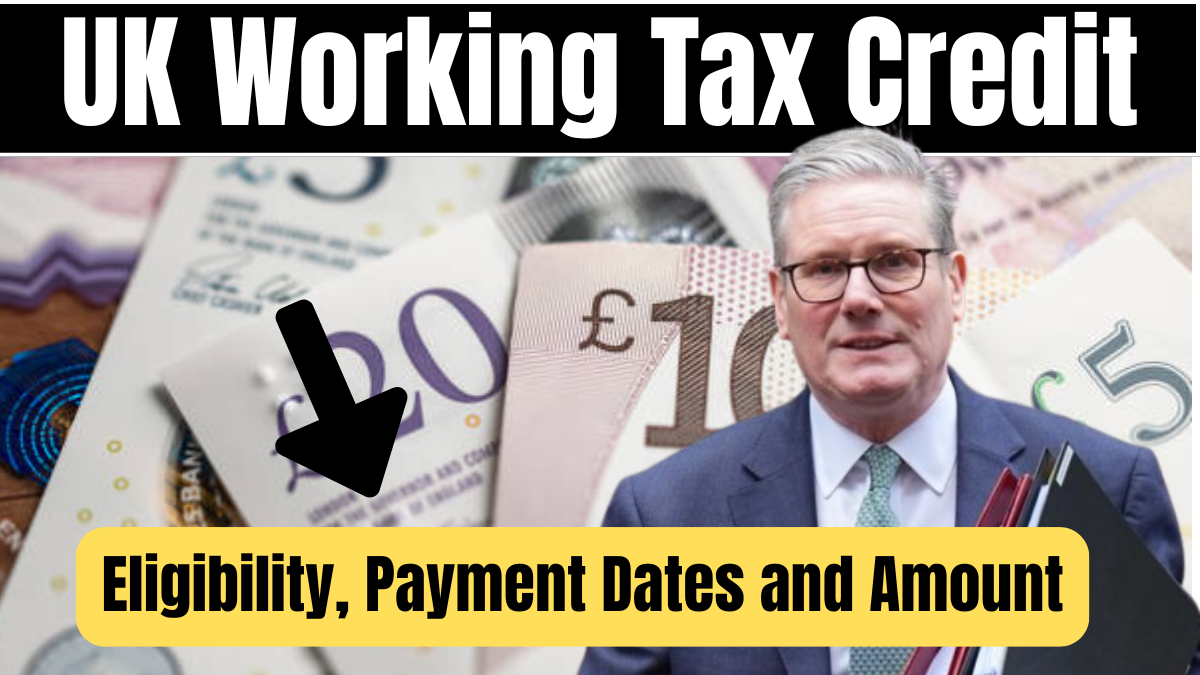The Working Tax Credit will officially end on 5 April 2025. No further payments will be made after that date. If you are affected, you will receive a letter from HMRC advising whether you should apply for Universal Credit or Pension Credit, depending on your circumstances.

Eligibility for Working Tax Credit 2025
You can only claim Working Tax Credit if you’re already receiving Child Tax Credit. New applications are no longer accepted unless tied to an existing Child Tax Credit case. Depending on your situation, you may need to apply for Universal Credit or Pension Credit instead.
Work Hours Requirements
You must work a minimum number of hours per week:
- Aged 25 to 59: At least 30 hours
- Aged 60 or over: At least 16 hours
- Disabled: At least 16 hours
- Single with 1 or more children: At least 16 hours
- Couple with 1+ children: Usually 24 hours combined (one must work at least 16)
Special Exceptions for Couples
You may qualify even if working fewer than 24 hours combined if:
- One of you is disabled
- One of you is aged 60+
- One of you receives Carer’s Allowance or Carer Support Payment (Scotland only)
- One partner is in hospital or prison
- One partner is incapacitated and receiving certain benefits
Eligible Work Types
Your work can be:
- As an employee
- Self-employed
- A mix of both
Self-employed individuals must meet conditions:
- Aim to make a profit
- Work regularly
- Keep business records (receipts, invoices)
- Follow legal requirements (licenses, insurance)
Disqualifiers for Self-Employment
You may be ineligible if:
- You’re not making profit or have no business plan
- You don’t work consistently
- Your average hourly earnings fall below the National Minimum Wage
Payment Amounts for 2025
| Element | Amount |
|---|---|
| Couple applying together | Up to £2,500/year |
| Single parent | Up to £2,500/year |
| Working 30+ hours a week | Up to £1,015/year |
| Disability element | Up to £3,935/year |
| Severe disability element (extra) | Up to £1,705/year |
| Approved childcare (1 child) | Up to £122.50/week |
| Approved childcare (2+ children) | Up to £210/week |
How Payments Are Made
- Paid directly to your bank account
- Weekly or every 4 weeks
- Payments continue until the tax year ends (5 April 2025)
If You’re Already on Working Tax Credit
Your transition to Universal Credit depends on whether you experience a change of circumstances, such as:
- Losing a job
- Having a child
- Dropping below the minimum work hours
In such cases, you’ll need to apply for Universal Credit, and HMRC will notify you.
What to Do Before April 2025
- Review your hours: Make sure you still qualify based on your work schedule
- Check for changes: Notify HMRC of any life changes within 30 days
- Prepare to switch: If required, be ready to apply for Universal Credit or Pension Credit
FAQs
What happens after 5 April 2025?
Your Working Tax Credit will stop. You will be guided by HMRC on transitioning to Universal Credit or Pension Credit.
Can I still apply for Working Tax Credit in 2025?
Only if you already get Child Tax Credit. New standalone Working Tax Credit claims are not accepted.
What if I’m self-employed?
You must prove your business is run commercially and profit-driven. Irregular or unprofitable work may disqualify you.
Do I have to report changes in my situation?
Yes, within 30 days. Failure to do so may result in incorrect payments or the need to repay.
When will I get paid?
Payments are issued weekly or every 4 weeks into your designated bank account.
Can I switch to Universal Credit early?
Yes, but it’s advised to wait unless prompted due to a change in circumstances.
Conclusion
The end of Working Tax Credit marks a significant shift in UK benefit programs. By April 2025, all eligible individuals must either move to Universal Credit or Pension Credit. Understanding your eligibility and tracking changes is essential to continue receiving the support you qualify for. Stay updated via official HMRC communication and prepare your documents ahead of time.
Click here to know more.
Aanchal is a passionate writer with a keen interest in storytelling, content creation, and creative expression. She enjoys exploring diverse topics and crafting engaging narratives that captivate readers.

